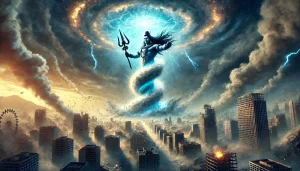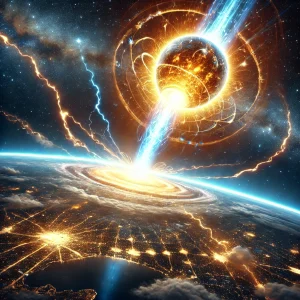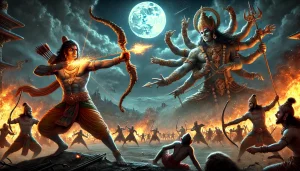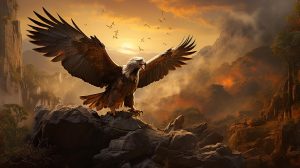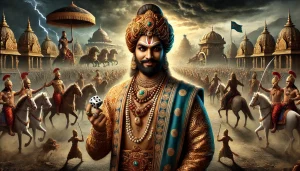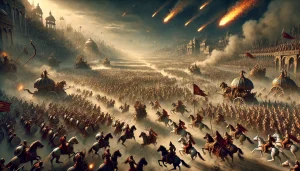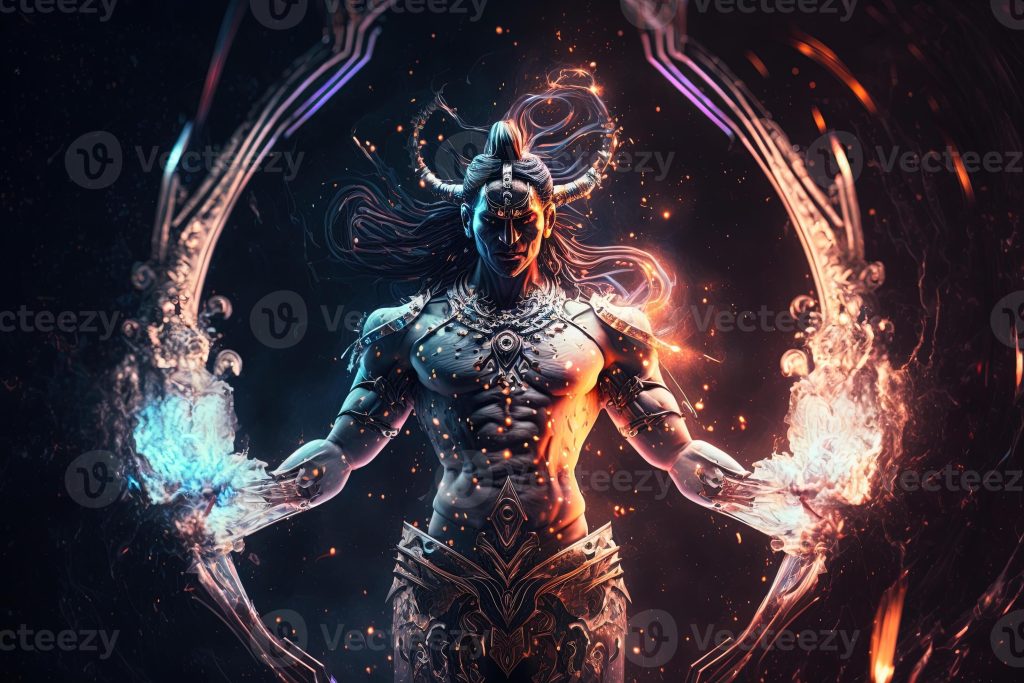
Trishula
Shiva’s trishul represents the three fundamental aspects of life. These are the three fundamental dimensions of life that are symbolized in many ways. They can also be called Ida, Pingala and Sushumna. These are the three basic nadis – the left, the right and the central – in the pranamaya kosha, or the energy body of the human system. Nadis are pathways or channels of prana in the system. There are 72,000 nadis that spring from the three fundamental ones.

The Pingala and Ida represent the basic duality in the existence. It is this duality which we traditionally personify as Shiva and Shakti. You can simply call it masculine and feminine. When I say masculine and feminine, I am not talking in terms of sex – about being male or female – but in terms of certain qualities in nature. You could say the logical and the intuitive aspect of you.
Bringing a balance between the Ida and Pingala will make you effective in the world; this will allow you to handle life aspects well. Most people live and die in Ida and Pingala. Sushumna, the central space, remains dormant. But Sushumna is the most significant aspect of human physiology. Life really begins only when energies enter into Sushumna. You attain to a new kind of balance, an inner balance where whatever happens outside, there is a certain space within you that never gets disturbed and cannot be touched by outside situations.

Significance of Lord Shiva’s Trishul (Trident)
Trishul represents the three aspects of consciousness – waking, dreaming and sleeping, and it represents the three gunas – satva, rajas and tamas. Holding a trishul (Trident) signifies that Shiva (the divinity) is above all the three states – waking, dreaming and sleeping, yet is the upholder of these three states.
The divinity is beyond the three gunas, but it holds the three gunas together.Shul means problems or suffering. Trishul means that which destroys all kind of suffering.
Three types of pain that arise in life:
1. Aadibhautik (physical)
2. Aadhyaatmik (spiritual) and
3. Aadidaivik (ethereal)
What relieves you from all the problems and suffering is the trishul. And it is in the hand of Shiva. Symbolism Behind The Form Of Shiva
Story behind Trishul
Among the most famous of all transcendental weapons is Lord Shiva’s trishul-astra. This three-pointed astra is one of the symbols most commonly associated with Shiva in Vedic iconography.
The origin of the trishul-astra is described in the Vishnu Purana. Created in association with Lord Surya the Sun God, it is said to have been carved out of matter from Sun.
When Suryadev married Samjna, the daughter of Vishwakarma, his wife soon became unhappy with married life due to the unbearable heat of her husband Surya. She complained to Vishwakarma, who agreed to solve the problem. Her father came to an arrangement whereby Surya agreed to reduce his heat to accommodate Samjna.

The transcendental architect Vishwakarma devised a means to have excess energy apportioned off of Surya. Surya’s heat was ground off on a grinding machine; the solar matter fell to the earth, reducing his heat by 1/8th. That material was then fashioned into the deadly trishul-astra.

(Vishwakarma-architect of the Gods)
After doing so, he made a few things from the left over dust of the Sun’s energy. He made it into the Pushpak Vimaan, the Trishul and the Sudarshan Chakra.
Later the Pushpak Vimaan became the transport of Lord Kuber, the trishul was given to Shiva and the Chakra became the main weapon of Lord Vishnu.
Lord Shiva’s trishul-astra, or trident, has come to be associated with numerous triad attributes. Held in Shiva’s right hand, it represents the three gunas. The three prongs represent the three shaktis of Shiva: iccha (will), jnana (knowledge), and kriya (action). Trishul’s points also symbolize three aspects of Shiva: paramashiva, parashakti (paranada or shiva-tattva) and parabindu (parameshvaraor shakti-tattva).
Shiva is known as the Lord of Omkara (Omkareshvara), thus in transcendental sound, the three points of trishul-astra are associated with the three syllables of Omkara: A (akara), U (ukara) and M (makara).
Functioning as the primary weapon of Shiva the Destroyer, trishul-astra is said to be capable of destroying the three worlds. The astra was once used by Shiva to sever the original head of Ganesha – a pastime we will explore in a segment to come.
Like many other astras, the trishul-astra is known to be used by other divine personalities associated with Shiva. Durga Ma carries Trishula as one of her many weapons. Saturn is also found circumambulating Meru Parvatham with trishul-astra in hand, along with his bow.

